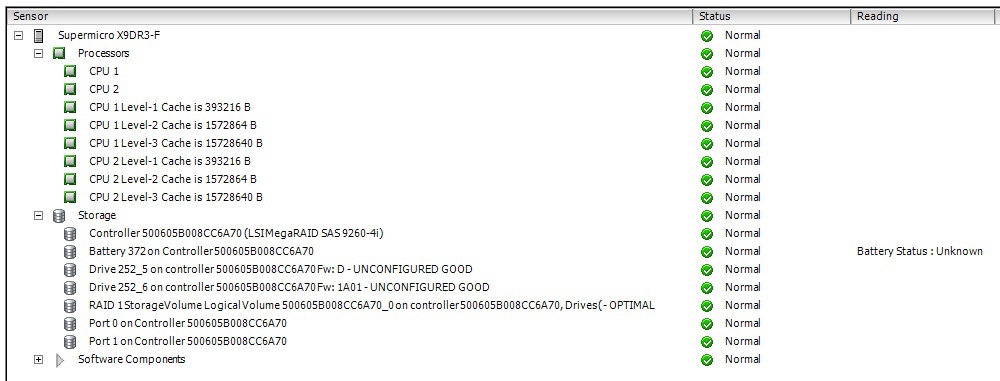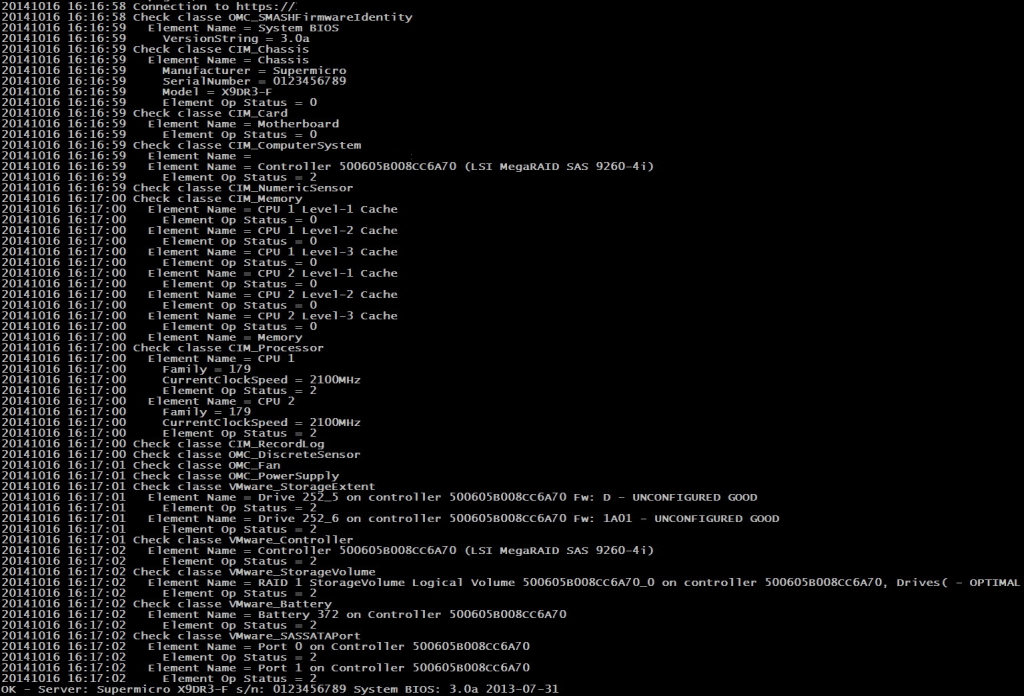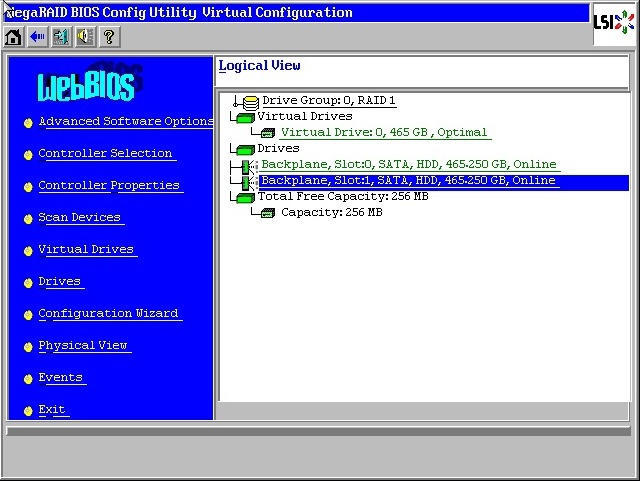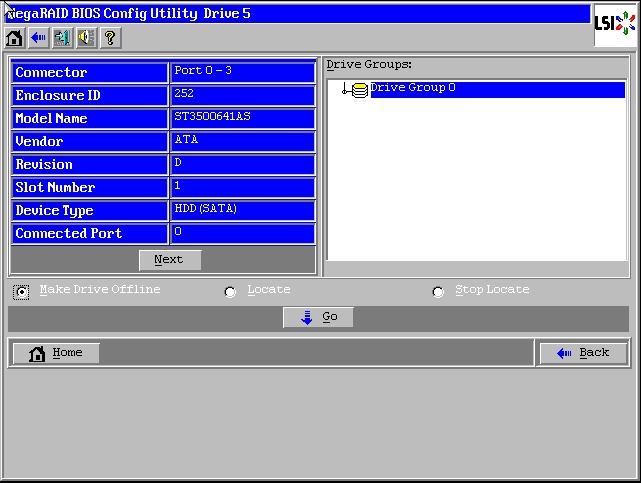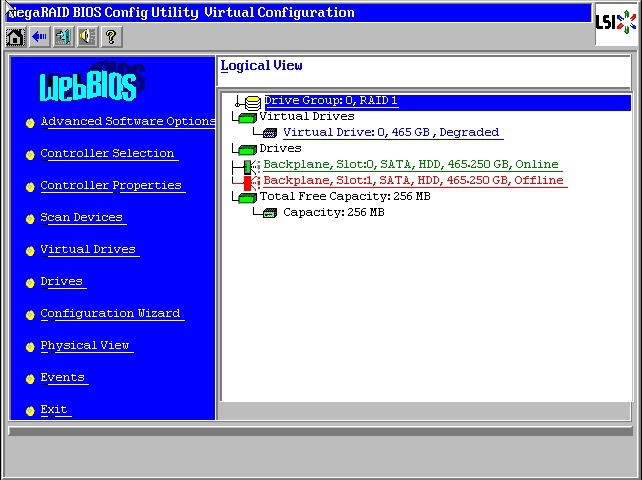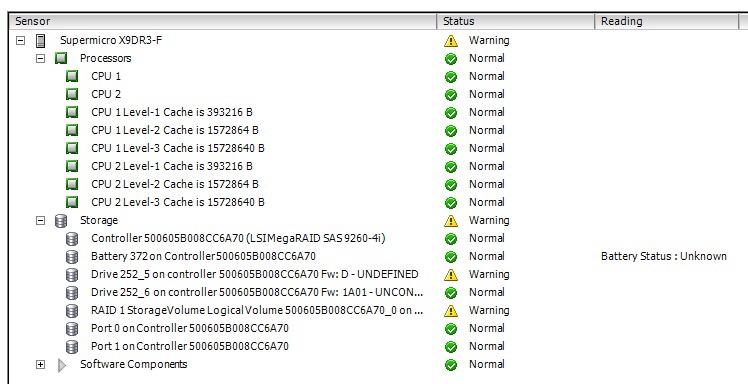Note: This post was prepared by a technical expert, in the process of finding the best solution on a test server.
There was a need to organize monitoring of the correct operation of the LSI MegaRAID family controllers on servers running the VMware vSphere ESXi v5.5 hypervisor – and, accordingly, to automatically receive notifications in case of any failures (for example, failure of one of the HDDs). In the process of the testing, it turned out that the solution is not limited to hypervisor data stores.
To solve this task, we used a test server based on the Supermicro X9DR3/i-F motherboard with an LSI MegaRAID SAS 9260-4i controller, to which two HDDs were connected and RAID1 was configured.
Even though LSI MegaRAID SAS 9260-4i is officially supported by ESXi, you won't be able to get any RAID status information from the Health Status section of the VMware vSphere client:
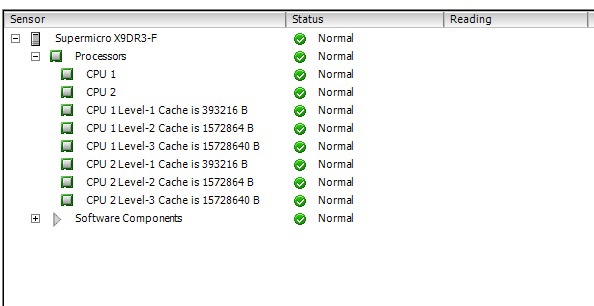
Fortunately, this is fixable. We go to the lsi.com website and find the archive with «SMIS Provider» for the desired controller there:
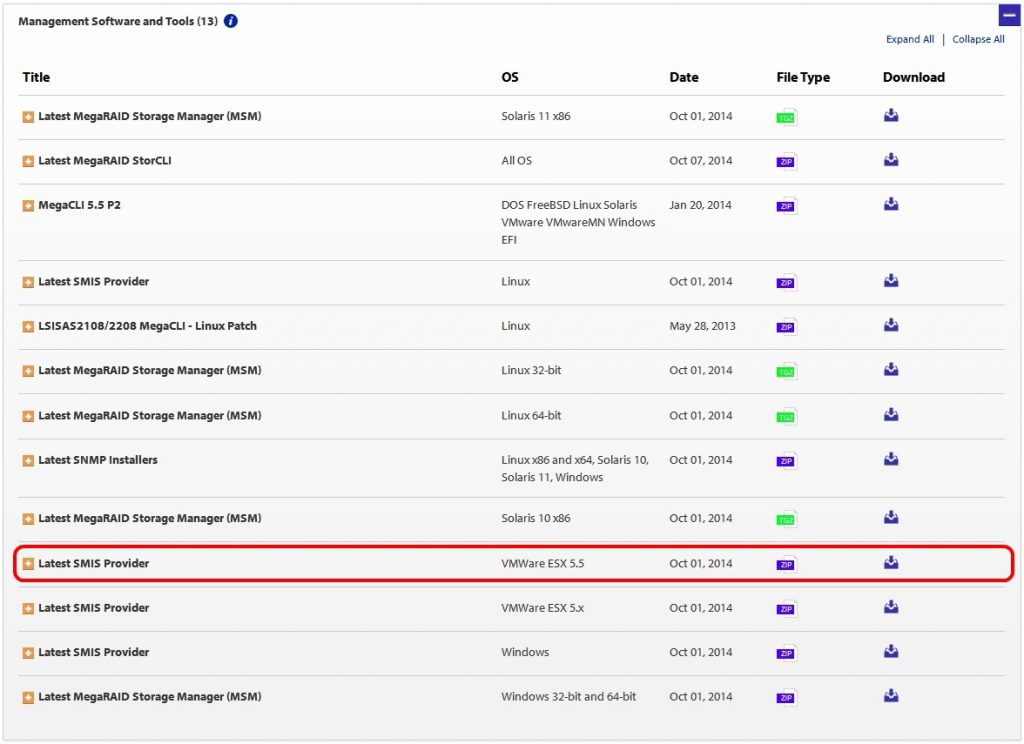
Download, unpack and find the file with the «vib» extension. This is a package that provides controller status monitoring using the built-in ESXi sensor mechanism. Copy this vib to the server, connect to it via SSH and install:
esxcli software vib install -v /vmfs/volumes/datastore1/500.04.V0.53-0003.vib

We reboot the server, connect to it again via SSH and make sure that the package is installed:
esxcli software vib list | grep -i lsi

Now in the «Health Status» section, we can observe the status of the LSI MegaRAID controller:
